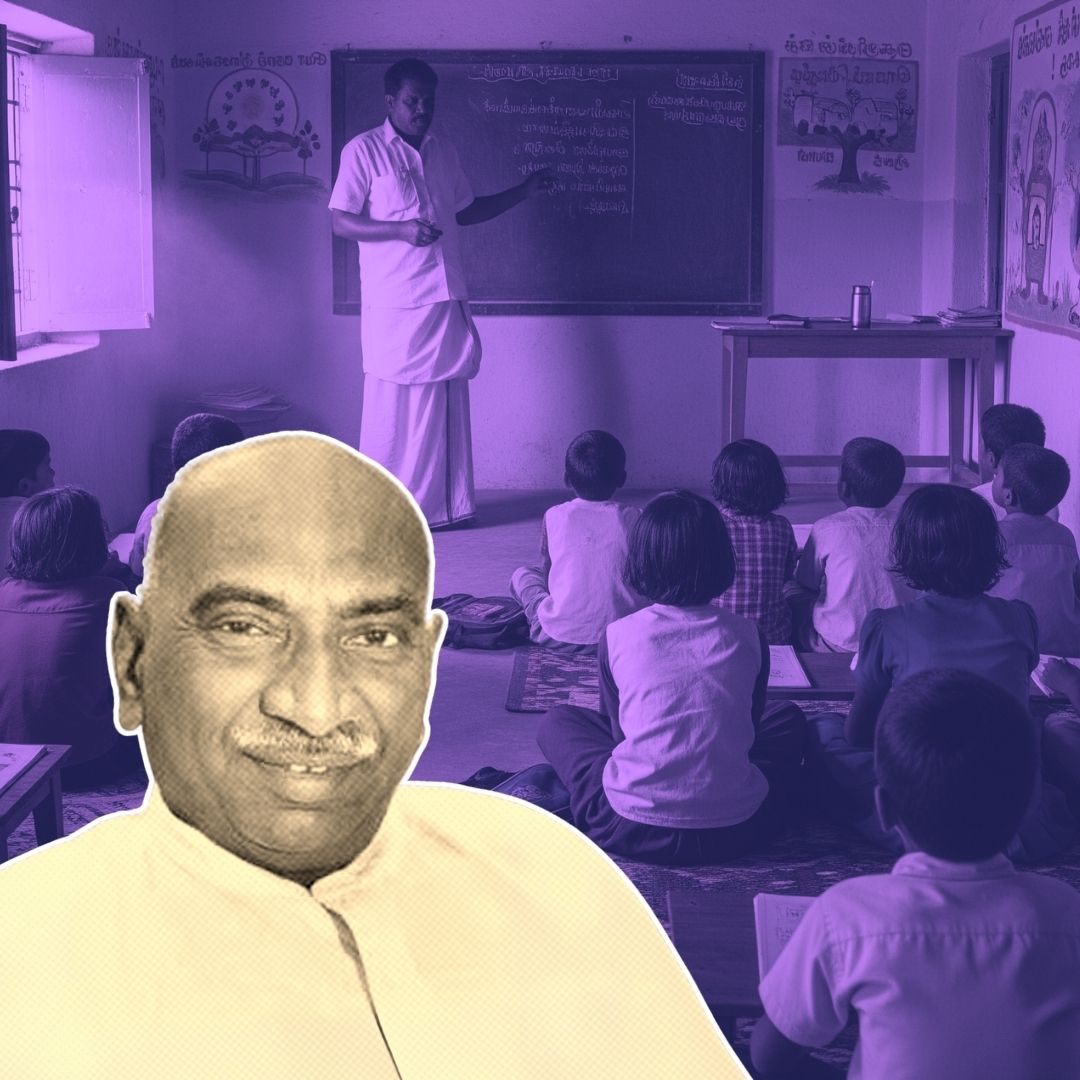Tamil Nadu today ranks as India’s second-largest economy, a feat rooted in visionary leadership dating back to the 1950s and 1960s. The architect behind this profound transformation was Kumaraswami Kamaraj, popularly known as Kamaraj.
His pioneering efforts in expanding education and social welfare programs created the human capital base that fueled the state’s sustained growth. This article explores his innovative policies, especially the establishment of one-teacher schools and the midday meal scheme, which catalyzed mass literacy and economic development.
The Educational Landscape Before Kamaraj’s Tenure
Before Independence, Tamil Nadu faced severe challenges:
- Literacy rate was low, around 16.6% in 1941, with significant disparities between rural and urban areas.
- Educational infrastructure was inadequate, especially in villages where schools were rare and teacher availability limited.
- Poverty and malnutrition barred many children from attending school regularly.
Kamaraj, who took office as Chief Minister in 1954, recognized that education was central to the state’s progress.
The One-Teacher School Model: Bringing Education to Every Village
Faced with the constraints of sparse resources and vast numbers of scattered villages, Kamaraj championed the one-teacher school system:
- Single teachers managed all subjects and five classes, enabling schooling in even the smallest and remotest villages. Over 12,000 new schools were established in his tenure.
- This innovation drastically reduced travel distances for children and allowed widespread access to formal education.
- Teacher training programs were launched to ensure quality teaching despite resource constraints.
This approach democratized education like never before and helped raise enrollment dramatically.
Free and Compulsory Education: Erasing Social Barriers
Kamaraj made education free and compulsory up to higher secondary level, ensuring no child was left behind due to economic hardship. He also introduced free school uniforms to eliminate caste- and class-based discrimination, fostering social inclusivity.
The Midday Meal Scheme: Feeding Minds and Bodies
Among Kamaraj’s most transformative policies was the midday meal scheme, reintroduced in 1956 with commitment and scale:
- Recognizing hunger as a barrier, Kamaraj ensured every child received at least one nutritious meal a day at school.
- This scheme increased attendance rates by over 30% in a few years and improved overall health and concentration among students.
- The program, initially met with resistance, has since become a model for the entire country and was further expanded in Tamil Nadu to include breakfast in 2022.
This coupling of nutrition with education created a powerful incentive, motivating families to send their children to school regularly.
Community Engagement and Financial Innovation
Kamaraj mobilized community participation through public donations and involvement to maintain and develop educational infrastructure. Local ownership strengthened sustainability and fostered social cohesion around education.
Impact on Literacy, Economic Development, and Infrastructure
The outcomes of Kamaraj’s reforms were far-reaching:
- Establishment of premier institutions like IIT Madras in 1959 expanded higher education horizons.
- Industrial infrastructure grew massively with public sector undertakings such as BHEL (Tiruchirappalli), Integral Coach Factory (Chennai), Neyveli Lignite Corporation, and others.
- Water and power projects, including ten new dams, boosted agricultural productivity and industrial growth.
- This infrastructural anchor and educated workforce ignited Tamil Nadu’s economic rise.
The Kamaraj Plan and Political Legacy
In 1963, Kamaraj voluntarily resigned as Chief Minister to rejuvenate the Congress party, initiating the Kamaraj Plan which prioritized ethical leadership and party renewal. This move earned him recognition as a “kingmaker” in Indian national politics, influencing leadership transitions post-Nehru.
Continuing Challenges and the Path Ahead
While Tamil Nadu’s educational access remains strong thanks to Kamaraj’s foundation, recent studies reveal challenges:
- NAS 2021 (National Achievement Survey) showed learning outcomes were declining, and ASER reports from Tamil Nadu have shown gaps in basic reading/math skills.
- Quality issues, shift towards private schools, teacher training gaps, and mushrooming of low-quality higher education institutions pose ongoing challenges.
- The state continues to innovate, extending midday meals to breakfast and pushing for equitable educational reforms aligned with societal aspirations.
Conclusion: The Enduring Legacy of Kamaraj’s Vision
Kamaraj’s transformational leadership laid the cornerstone for Tamil Nadu’s rise as an economic powerhouse by radically expanding education and linking it with social welfare. His deep understanding of grassroots realities inspired pragmatic, farsighted policies—from one-teacher schools to midday meals—that empowered millions and reshaped society.
The Logical Indian’s Perspective
The Logical Indian believes Tamil Nadu’s success is a powerful example of how inclusive policymaking rooted in grassroots realities can drive lasting social and economic progress.
Kamaraj’s holistic approach—linking education, nutrition, and infrastructure—created a virtuous cycle that empowered generations beyond mere GDP growth figures.












